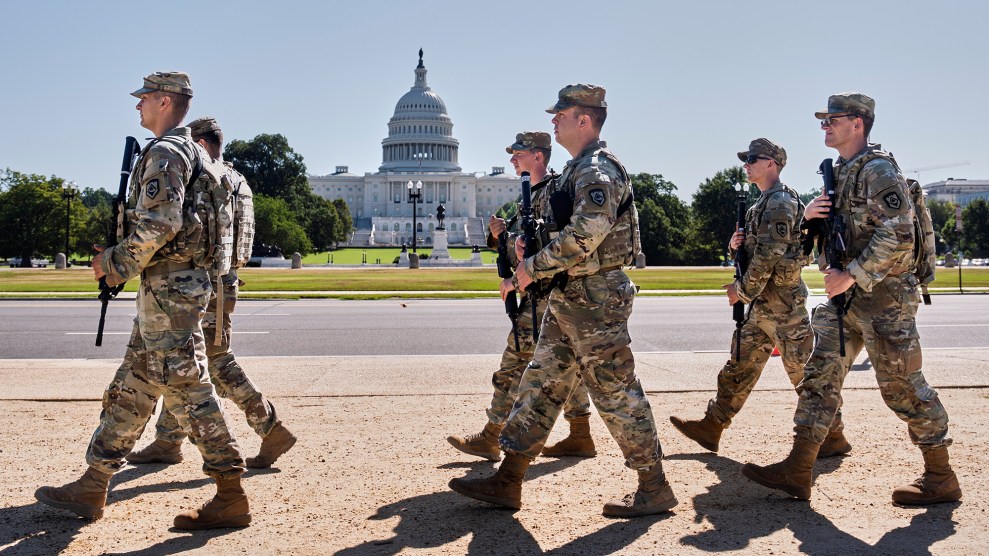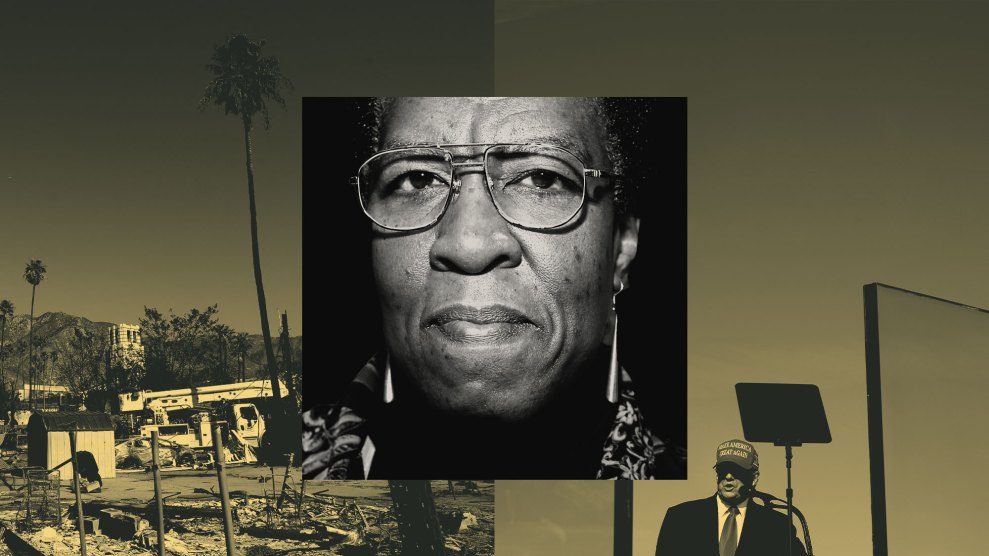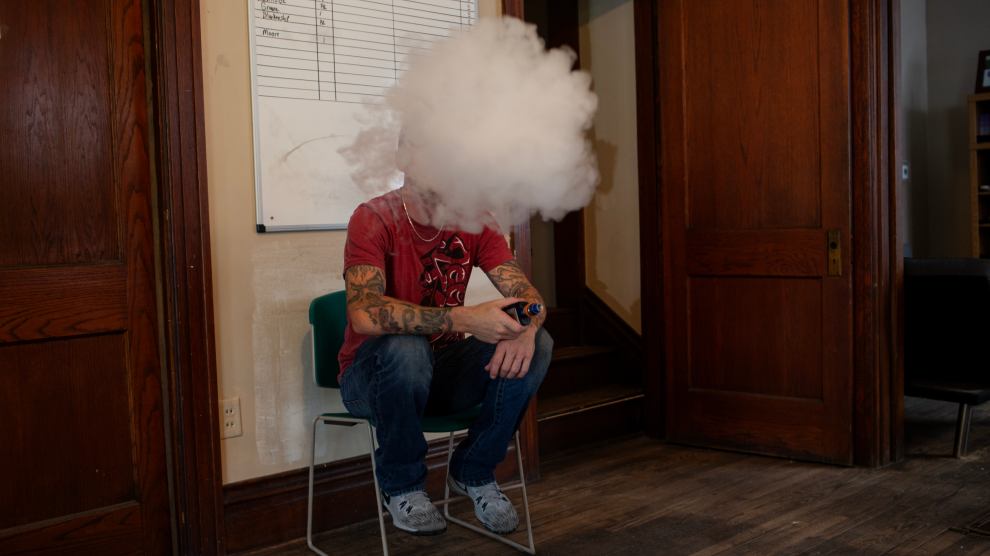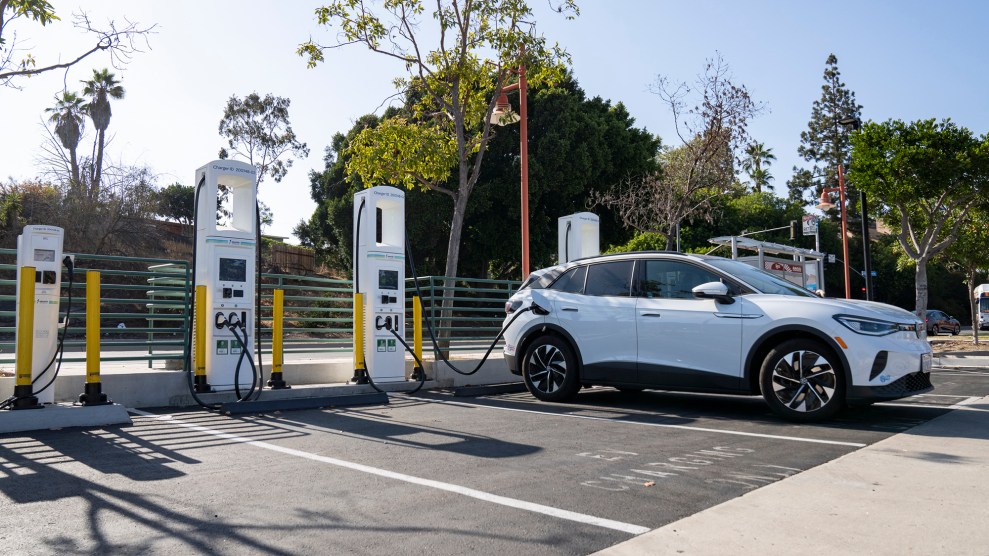PRETORIA, South Africa — The Centurion Cricket Fields outside Pretoria gleamed with a sheen of frost at 6 a.m. on June 16. Women in spaghetti-strap dresses shivered, while men snugged their jackets against the South African winter. These were South African VIPs — ranging from members of parliament to heroes of the anti-apartheid struggle — waiting to be whisked to the Union Buildings to witness the inauguration of Thabo Mbeki, the second democratically elected president in the country’s history. The occasion also marked another milestone: it was a farewell to Nelson Mandela, the patron saint of South Africa’s peaceful transition to democracy, who at age 80 was stepping down after five years as president.
South Africa’s second all-race election, which took place on June 2, was notable for how shockingly normal it was. Political violence and intimidation were nearly nonexistent. Instead, people queued for hours in the crisp air to place their votes. More than 85 percent of eligible South African voters cast ballots, with two-thirds of the votes going to the African National Congress. The New National Party, heir to the party that implemented apartheid in 1948, received only 8 percent of the vote and was routed. Now the distinction of official opposition party passes to the Democratic Party, a mostly white liberal party which claimed 10 percent of the vote. The inauguration capped an orderly transfer of power from one elected leader to another — a rarity in African politics.
I shouldn’t keep marveling at how the old apartheid symbols have been integrated into South Africa’s young democracy. After all, South Africa was certified apartheid-free five years ago when Nelson Mandela first ascended the steps of the Union Buildings to become president. But I can’t help doing double takes at the jarring juxtaposition of old and new. To reach the inaugural ceremony, our bus casually passed by the enormous bronze bust of former prime minister J.G. Strijdom in downtown Pretoria. There was a difference on this day, however: Thabo Mbeki ordered that the old apartheid icons be covered in black wraps for his inauguration. Talk shows and newspapers were abuzz with debate over the move, with one critic sniping that Mbeki ought to cover the entire Union Buildings if he really wanted to blot out the apartheid past. But the new prez stood firm against the old order. “They might spoil the ecstasy of the occasion,” a government spokesman said of the old statues. South Africa’s white leaders thus spent the day in sackcloths.
I took my seat with about 4,500 other guests in the amphitheater of the Union Buildings. Once an outpost of Europe in Africa, the sand-colored building with its austere Roman columns was transformed into a backdrop for African choirs, the leaders of 130 nations, and the presidents of 30 African countries. The crowd provided a snap popularity poll of the various leaders. PLO President Yasir Arafat and Libyan leader Muammar Qaddafi (on his first visit outside of Libya since the imposition of U.N. sanctions in 1989) were the favorites, eliciting standing ovations from the still-shivering masses.
Finally, it was Nelson Mandela’s moment. Amid thunderous applause and spirited singing, the much beloved leader referred to simply as “Tata” (grandfather) or by his clan name, Madiba, slowly climbed the steps of the podium accompanied by his wife, Graca Machel. The moment evoked memories of his emotional 1994 inauguration, when he became the first African to assume the presidency of South Africa, putting an end to 350 years of white domination. But this time, instead of clasping hands with former President F.W. de Klerk as he had in 1994, Mandela embraced the man who had been his deputy president, Thabo Mbeki. The two men joined hands high above their heads and walked to the edge of the stage. Both men were giddy with elation at the poignant passing of the torch, laughing and waving to the crowds.
As Mandela and Mbeki stood at attention, the South African Air Force, once a hated symbol of apartheid’s global reach, roared past trailing the colors of the new South African flag. Three South African Airways 747 planes then swooped overhead, each bearing a message on its underbody: “Thank You Madiba,” said one, while another bore the greeting, “Welcome President Mbeki.” Off on a distant hillside, I noticed the Voortrekker Monument, built 60 years ago as a shrine to the Great Trek of Afrikaner pioneers in the 19th century, and now a mute relic from a vanquished past.
A praise singer clad in feathers and animal skins danced onto the stage. “You are taking the baton from a great man!” he declared to Mbeki, waving a staff overhead and bounding across the podium in front of the two leaders. “We believe you will successfully inherit the legacy he [Mandela] leaves behind for the benefit of the people of this country.” A security guard gently prodded him to finish, only to have the praise singer leap into his arms and be carried off the stage to roars of laughter.
Croaking in a voice hoarse from flu, President Thabo Mbeki in his inaugural address mixed poetry, pragmatism, and a sober acknowledgment of the challenges that he faces. “Our nights cannot but be nights of nightmares while millions of our people live in conditions of degrading poverty,” he declared. Mbeki added that corruption, AIDS, crime, and “racial and gender inequalities” had to be redressed. Mbeki then sounded the central theme of his political life, that South Africa is poised to lead an African Renaissance. “As Africans, we are children of the abyss who have sustained a backward march for half a millennium. We have been a source for human slaves. Our countries were turned into the patrimony of colonial powers. We have been victim to our own African predators,” he declared pointedly to the assembled dignitaries, both African and European.
“We trust that what we will do will not only better our own condition as a people, but will also make a contribution, however small, to the success of Africa’s renaissance, towards the identification of the century ahead of us as the African Century.”
Following the ceremony, Mandela and Mbeki addressed a crowd of 50,000 young people who had gathered on the lawn of the Union Buildings to hear a concert by all-star bands from around the African continent.
“Syabonga [thank you] Madiba, syabonga!” the crowd chanted as the two leaders arrived. “Viva Mbeki, viva!”
I drifted off toward downtown Pretoria. The roads were closed to cars, and throngs of revelers, mostly African, packed the normally staid streets from sidewalk to sidewalk. I mingled with a group of four young men. Wilson, age 22, who works for Coca-Cola, told me, “The old man [Mandela] was too soft on the whites. He was afraid that they would take their money and leave after he was elected. But Mbeki will be tougher, and deliver services to the poor people.” His friend David, who is unemployed, insisted, “It will be better with Mbeki. He’s a brilliant man.”
As the crowds danced into the night on the sprawling lawn of the Union Buildings, I noticed a 30-foot-high tower in the middle of the partiers. I peered closer and discerned the form of Gen. Louis Botha, an Afrikaner war hero from the turn of the century. He had been immortalized in bronze atop his horse, leading his people into battle. On this day, he and his steed were unceremoniously shrouded beneath a black wrap. The crowds took no notice of the vanquished conquistador, dancing around him as they celebrated another hopeful dawn in the new South Africa.
David Goodman is the author of “Fault Lines: Journeys Into the New South Africa,” just published by University of California Press.
















